
views
- Contexto is a web-based word game where you guess the daily word based on how close in context your guesses are.
- To play, type any word into the text box and press enter. The number that appears next to your word is the position relative to the daily word.
- The lower the number, the closer you are to the secret word. Keep entering more guesses based on your previous guess until you reach the word of the day.
What is Contexto?

Contexto is an online game where you guess a word based on its context. Created by a developer from Brazil, Contexto was inspired by Semantle. Contexto is powered by an AI algorithm that analyzes thousands of texts on the internet to calculate the similarity of words in relation to the word of the day. For example, the word “coffee” might show up often around words like “caramel” or “cup,” but not around words like “grass” or “perfume.” The game automatically resets at midnight in your local time with the new daily word.
How to Play Contexto
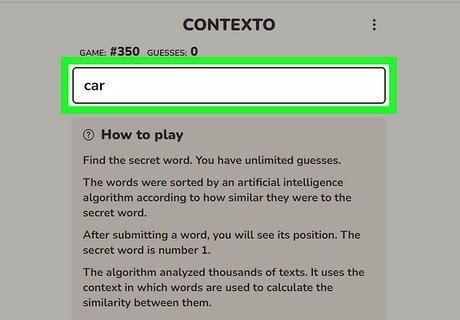
Type any word into the text entry field and press enter. The word will pop up below the text box. The box with your word will be filled with a color (red, yellow, or green) and show a number to the right. You have unlimited guesses, and at the end of the game, the amount of guesses you make is used as your score. The color shows you what position range your guess is in—green is close (1-300) to the daily word, while red (1500+) is far away.
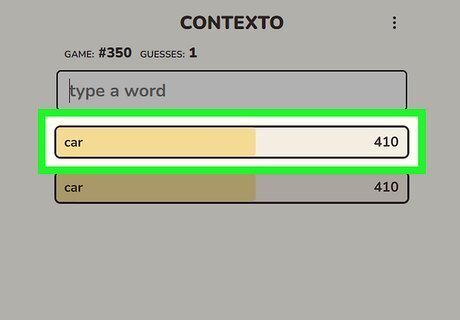
The number beside your guess is how close it is to the daily word. The number beside your guess shows the position of the word relative to the secret word. The lower the number you get, the closer you are to the secret word. For example, if you guess the word “tree” and the number is “540,” you’re 539 words away from the daily word.

Keep entering guesses based on your previous guess. For example, if you enter the word “Atlas” and you get the number “7,” that tells you that the daily word is super close in context. In that case, maybe the word “Map” or “Location” will get you closer to the answer.
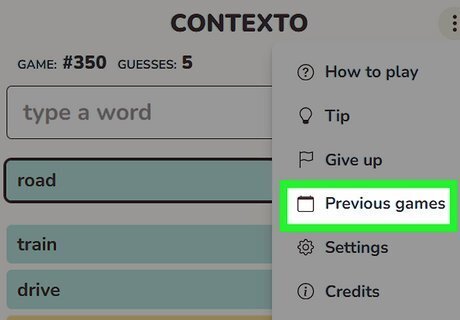
After you solve the daily puzzle, you can go back and play past games. Click on the “Previous games” button to see a list of past games. You can either scroll and click on a specific date, or choose the “Random” button at the top to transport to a completely random game. If you choose the “Random” option, you won’t be able to see the number of the game you’re playing until after you solve the puzzle. You can also click the “Closest words” button to see the top 500 words for today’s game.
Contexto Strategies
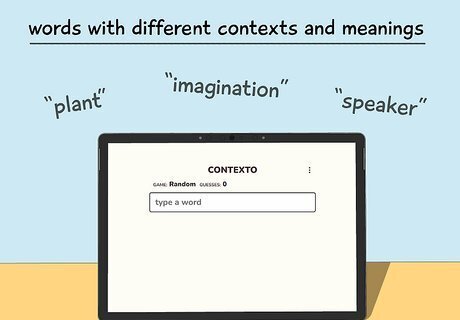
Choose a variety of words with different categories and contexts. At the beginning of the game, your goal is to generate words that can lead you down the right path to the daily word. One of the best ways to try and narrow it down is to use a couple of words that have completely different contexts and meanings—like “plant,” “imagination,” and “speaker.” The context in which the daily words are commonly used can also impact the game. For example, if “TV” and “television” are in very different positions on the scoreboard, it means those two words are used differently in relation to the daily word, even though they’re the same object.
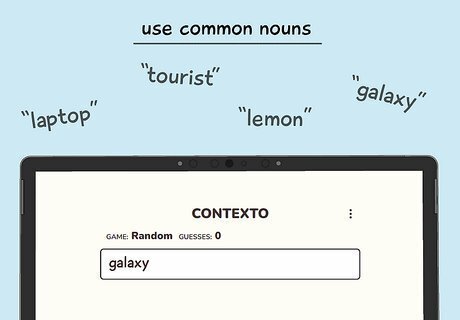
Try to guess nouns most of the time. The majority of Contexto puzzle answers are common nouns, such as laptop, tourist, galaxy, or lemon. Although verbs or adjectives can help you narrow down the daily word, picking a noun might increase your chances of solving the puzzle just by guessing. There are a small number of exceptions to this rule, like “beautiful” or “work,” but most of the Contexto answers are nouns.

Use different word forms for different guesses. Some Contexto words won’t allow you to use variations of the same word as separate guesses (like hide vs. hidden), but it might be worth a try if a different form of the same word gets you closer to the daily word. For example, “mailing” and “mail” are not the same Contexto words, meaning that if your daily word is “spam,” “mail” might get you closer to the answer than “mailing” would. When guessing, singular or plural forms don’t matter—if you enter a plural word, the game will automatically change it to the singular form when you enter it as your guess.
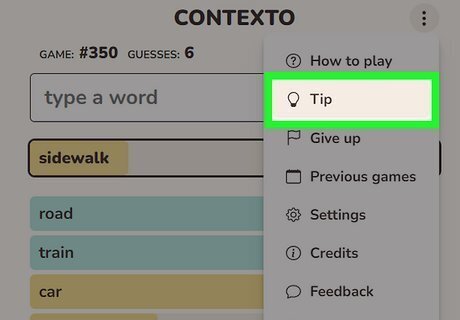
Ask for a tip if you’re feeling stuck. Just click the three dots in the upper right corner, then select “Tip.” The game gives you an unlimited amount of tips, and the hints you ask for will be listed in your final score. Tips can be super helpful if you’re stuck or if you misinterpret the theme and go in an entirely different direction.

Consider using a thesaurus to get words. Although Contexto isn’t based on how similar in meaning your guess is to the daily word, a thesaurus might give you a list of related words from all different kinds of contexts. Seeing different meanings for the same word might also help you think about the puzzle from a different angle. Try using an online thesaurus like Thesaurus.com or Merriam-Webster’s thesaurus.
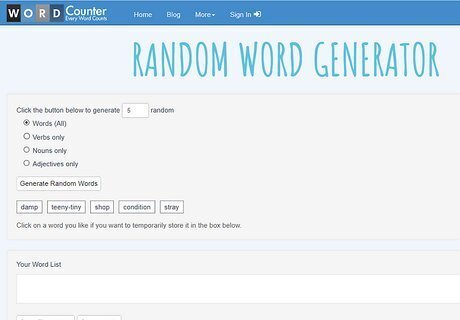
Use a random word generator for inspiration. If you’d like a little help coming up with words that have different contexts and meanings, a random word generator might be the spark you need. Try an online word generator from wordcounter.net or randomwordgenerator.com.
Best Starting Words for Contexto

Enter broad noun categories to help you narrow down the daily word. The best guesses cover tons of contexts and ideas that the common nouns might be used with. For example, you could start out with extremely broad words, like “Person,” “Place,” “Thing,” “Idea,” or “Concept.” Here are some other early guesses you can use: Food Occupation Animal Event Clothing Transportation City Nature Home Work Technology Vacation
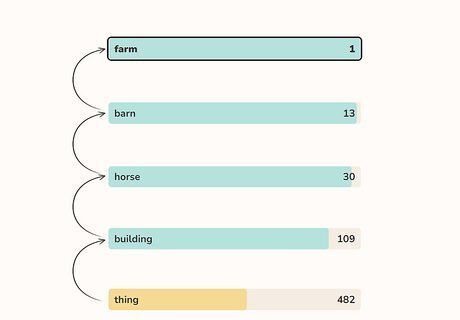
Enter specific examples based on your previous guesses. Once you know the category and the context of the daily word, a good strategy might be to try specific examples that make sense with that information. For example, if you know the word is a “thing” related to “clothing,” you might try “shirt,” “hat,” or “wallet.” Or if you know the word is related to “animal,” you might guess different kinds of animals, like a “lion,” a “dog,” or a “dolphin.”
What do the Contexto squares mean?
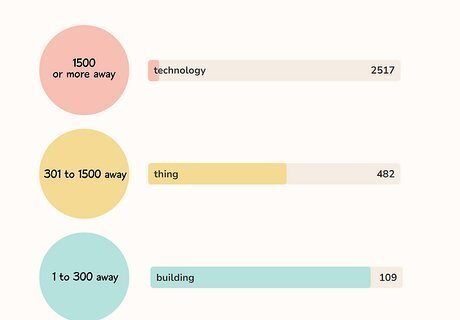
The colored squares show how many guesses were in each position range. When you guess the daily word, a pop-up will appear congratulating you. In the box, it will show green, yellow, and red squares with numbers beside them. These boxes also appear when you share your score on social media. The boxes and the numbers beside them indicate how many guesses you made in each position range: Green: The number of guesses that were 1 to 300 away from the daily word Yellow: The number of guesses that were 301 to 1500 away from the daily word Red: The number of guesses that were 1500 or more away from the daily word
Contexto Settings
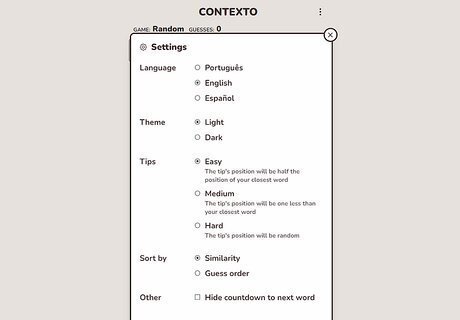
Contexto’s settings offer a few options to enhance your playing experience. Although Contexto can be challenging, its interface and settings menu are relatively simple and easy to understand. Here’s what each option means and what it can do for your game: Language: Play in English, Spanish, or Portuguese. Theme: Choose a “Light” or “Dark” background. This option can be helpful if you play word games late at night or in the dark. Tips: Choose how much information your tips give away. If you pick “Easy,” the tip’s position will bridge half the distance between your closest word and the daily word. Picking “Medium” means that the tip’s position will be one less than your closest word. The “Hard” option will make the tip’s position completely random. Sort by: Organize the words you’ve guessed by “Similarity” or by “Guess order.” Other: You can check the box to hide the countdown to tomorrow’s word after you’ve guessed the word for today.
Similar Fun Web-Based Word Games
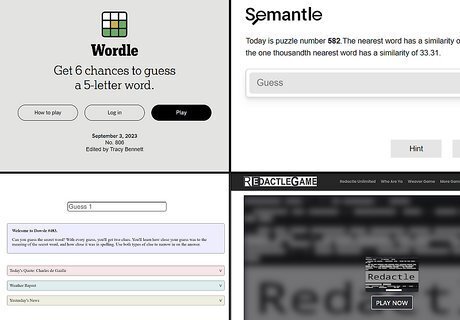
Try one of these games if you’re looking for more word-based fun! If you’re looking for another game similar to Contexto, try one of these online options: Wordle: In this classic word game, you get 6 chances to guess a 5-letter word. After you make a guess in Wordle, the tiles will change to indicate whether you have guessed the correct letters in the correct positions in the word. Semantle: This is the game Contexto was based on, so the idea is similar. However, in Semantle, the daily word can be any part of speech, your guesses are case-sensitive, and you’re trying to get closer to 100 instead of 1. You can also try Semantle Junior if you want a similar game with easier words to guess. Dowsle: This game is also similar to Contexto, but you have two bars that let you know how close your guess is to the daily word based on its meaning and spelling. Redactle: In this game, you get a random Wikipedia article with the most important words blacked out. Enter words into the text box to reveal blacked-out words—the goal is to figure out the title or subject of the article.

















Comments
0 comment